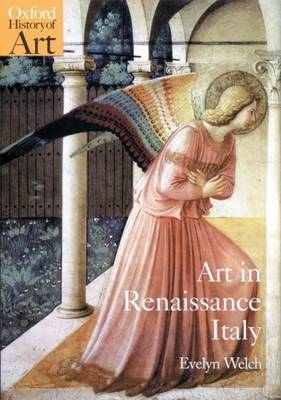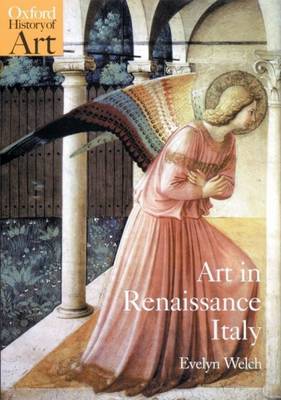
Door een staking bij bpost kan je online bestelling op dit moment iets langer onderweg zijn dan voorzien. Dringend iets nodig? Onze winkels ontvangen jou met open armen!
- Afhalen na 1 uur in een winkel met voorraad
- Gratis thuislevering in België vanaf € 30
- Ruim aanbod met 7 miljoen producten
Door een staking bij bpost kan je online bestelling op dit moment iets langer onderweg zijn dan voorzien. Dringend iets nodig? Onze winkels ontvangen jou met open armen!
- Afhalen na 1 uur in een winkel met voorraad
- Gratis thuislevering in België vanaf € 30
- Ruim aanbod met 7 miljoen producten
Zoeken
Omschrijving
The Italian Renaissance was a pivotal period in the history of Western culture during which artists such as Masaccio, Donatello, Fra Angelico, and Leonardo created some of the world's most influential and exciting works in a variety of artistic fields. Here, Evelyn Welch presents a fresh picture of the Italian Renaissance by challenging traditional scholarship and placing emphasis on recreating the experience of contemporary Italians: the patrons who commissioned the works, the members of the public who viewed them, and the artists who produced them. Art in Renaissance Italy 1350-1500 dramatically revises the traditional story of the Renaissance and takes into account new issues that have greatly enriched our understanding of the period. From paintings and coins to sculptures and tapestries, Welch examines the issues of materials, workshop practices, and artist-patron relationships, and explores the ways in which visual imagery related to contemporary sexual, social, and political behavior.
Specificaties
Betrokkenen
- Auteur(s):
- Uitgeverij:
Inhoud
- Aantal bladzijden:
- 352
- Taal:
- Engels
- Reeks:
Eigenschappen
- Productcode (EAN):
- 9780192842794
- Verschijningsdatum:
- 17/05/2001
- Uitvoering:
- Paperback
- Formaat:
- Trade paperback (VS)
- Afmetingen:
- 167 mm x 237 mm
- Gewicht:
- 830 g

Alleen bij Standaard Boekhandel
+ 65 punten op je klantenkaart van Standaard Boekhandel
Beoordelingen
We publiceren alleen reviews die voldoen aan de voorwaarden voor reviews. Bekijk onze voorwaarden voor reviews.











